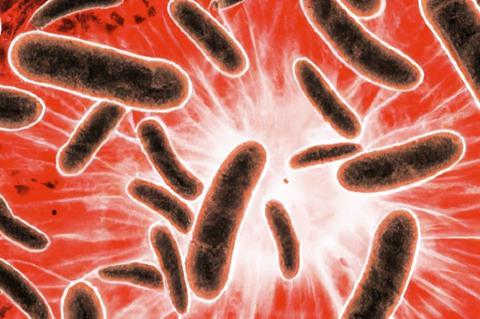Polychromatic light administered by device into blood delivers a moderate antibacterial effect, according to a multidisciplinary team of researchers.
The team, led by Professor Andrew McBain of the University of Manchester, was asked to assess the antibacterial effects of a device, which is used in some private clinics in the US.
Their findings were reported in the paper, ‘Antibacterial Effects in Blood Irradiated with a Polychromatic Device Mediated Through Reactive Oxygen Species: Possible Involvement of Haem’, which appeared in Letters in Applied Microbiology, an Applied Microbiology International publication.

“There is interest in the use of light in various therapies by healthcare practitioners and consumers. We were asked by a potential UK distributor to assess the device,” Professor McBain said.
“Various health benefits have been claimed, but it is the antibacterial effects that were tasked to investigate.”
Bacterial viability
The team found that the polychromatic device caused moderate decreases in bacterial viability apparently due to reactive oxygen species generated by the excitation of haem groups, mainly by the red wavelength.
“We do a lot of multidisciplinary research, so it wasn’t difficult to put a team together for the study,” Professor McBain said.
“Here, the team included a biophysicist, Jian Lu; a physicist specialising in lasers and photonics, Mark Dickinson, a critical care physician, Paul Dark, a photomedicine specialist who was already advising the manufacturer, Michael Hamblin, and of course, microbiologists Thomas Willmott, Gavin Humphreys, and me.”
The researchers characterised the light output of the system and developed an in-vitro system to simulate the application to the blood via a cannula in a peripheral vein, before assessing the effects of the combined light output and individual wavelengths.
“We observed a modest but statistically significant antibacterial effect. We then took steps to determine the mechanisms involved,” Professor McBain said.
“We found that concentrations of reactive oxygen species were significantly higher under light stimulation and that the antibacterial effect was not observed if an antioxidant was added. We could also not detect an antibacterial effect in the absence of blood, but adding haem restored it.
“We concluded that the antibacterial effect was mediated by reactive oxygen species generated by the excitation of haem groups. This effect was greatest with visible red light.”
Clinical trial
Professor McBain said the best way forward to assess the health benefits of the device would be to proceed to clinical trial.
“We can’t draw any conclusions about the clinical effects of the device from this work so we were careful not to overextend when we wrote the paper,” he said.
“As a journal editor, I believe that being clear about the strengths and weaknesses of a study will be more useful to readers than making overly bold or first-time claims.”
While Professor McBain was Principal Investigator, he emphasised that the whole team contributed and advised.
“It is very important that we fully acknowledge the first author, Thomas Willmott,” he added.
“He worked on this as a technician, went on to do a PhD on the oral microbiome in pregnancy with us, and is now a well-established postdoctoral researcher in the group.
“Taking up the challenge of the project in the first place has led us in positive directions that could never have been predicted, and for that, we are grateful.”
‘Antibacterial Effects in Blood Irradiated with a Polychromatic Device Mediated Through Reactive Oxygen Species: Possible Involvement of Haem’, is published in Letters in Applied Microbiology.







No comments yet